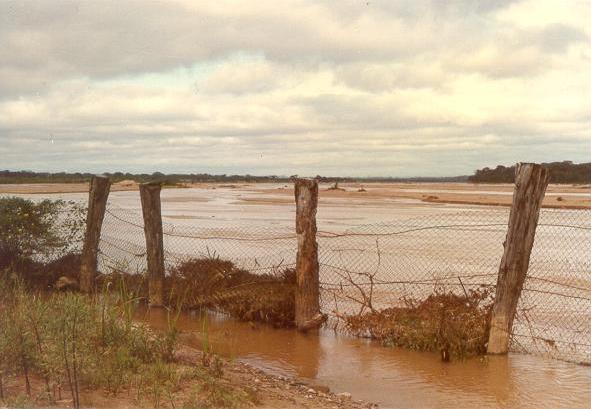CIV E 445 - APPLIED HYDROLOGY
SPRING 2014
LAB No. 4
The bottom width of the Pirai River at the reach Confluencia Guenda - Puente FF.CC. is: b = 155 m wide (see photo). The side slope is: z = 2. The Manning coefficient is: n = 0.030. The bottom slope is: S = 0.00013.

Determine the sediment discharge (M. Tons/day) at flow depths varying from 0.5 to 3.0 m, at intervals of 0.5 m. Use ONLINE CHANNEL 15. Use the Colby sediment rating curve shown below (sand discharge in the ordinates in t/d, i.e., M.Tons/day).

Study the The CoCoRaHS Guide for measuring reference evapotranspiration (ETo). Answer the following questions:
- Does evapotranspiration measure evaporation?
- What does the ETgage measure? How does it do it?
- What time of the day should the ETgage be measured?
- How do you make sure the meniscus isn't stuck?
- In the CoCoRaHS Guide, what was the reading on the second day of observation?
- According to the CoCoRaHS Guide, what is a normal ETo measurement?
- According to the CoCoRaHS Guide, what is a high ETo measurement?
-
Given the following data for Ft. Collins, Colorado: Month July; mean air temperature 20°C; net radiation 600 cal/cm2/day, relative humidity 50%, wind velocity 500 km/day. According to the Penman formula, what is the daily ETo for this data? At what relative humidity is the ETo likely to be considered high, i.e., greater than 0.5 in/day?